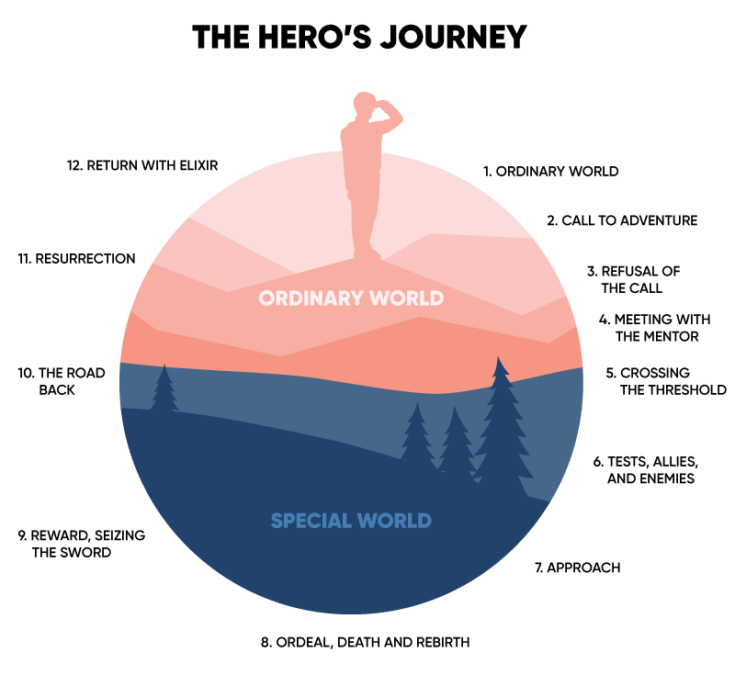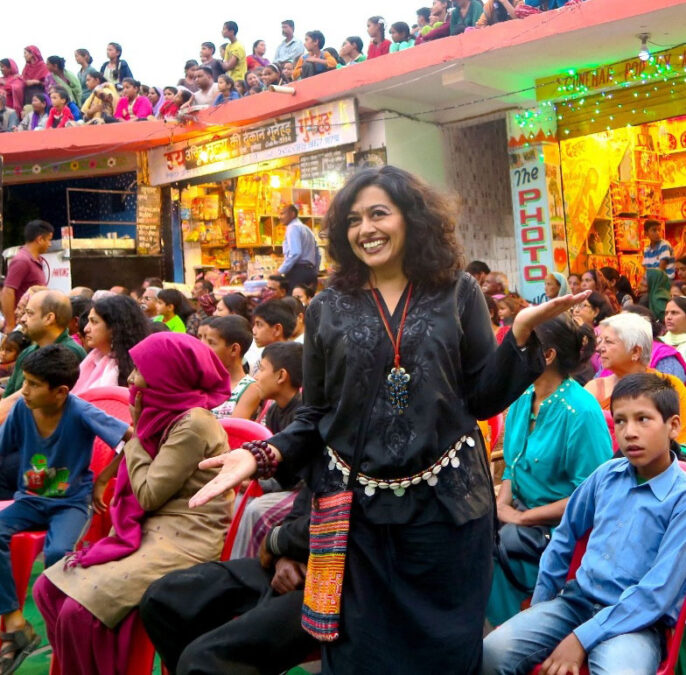Brands using the hero’s journey as a form of brand storytelling isn’t a new concept; it is an easily recognizable format popularized by mythology professor Joseph Campbell in 1949. A character goes on an adventure, faces a crisis, and returns home having been transformed by the journey. In total, Campbell identified 12 steps of the hero’s journey:

When we think of “hero,” we tend to immediately think of characters with superpowers from the Marvel or DC universes. We might also think of Olympic athletes or notable celebrities with humble beginnings. However, brand storytelling has gradually shifted from glorified protagonists to everyday people with diverse backgrounds and realistic struggles. From “hero” to human, the consumer is now able to relate to the journey. They are able to extend empathy, as they can see themselves more realistically in the character’s shoes.
Since the hero’s journey is an easily recognizable storytelling format, brands can truly exercise creative liberty in order to differentiate themselves from competitors. The beautiful thing about this narrative technique is the fact that all 12 steps are not necessary to complete a story. In fact, the stages do not have to be in chronological order. Brands can be selective with which stages they want to incorporate and amplify to create amazing content.
We’ve compiled three great examples of brands using the hero’s journey storytelling format but molding it in their own unique way.
A Call to an (Unordinary) Adventure
Lyft’s “Yes, You Are a Bike Person” campaign, advertising its new bikeshare capability, incorporates the introductory stages of the hero’s journey. This example is perhaps the closest to a more traditional approach to the hero’s journey from a brand perspective; it calls the consumer (the hero in this case) to go on an adventure. Yet it applies the hero’s journey in a more “normal” or realistic setting.
STAGE 1 (Ordinary world):
Lyft portrays the monotony of the ordinary world by capturing typical scenes, such as in an office, a bathroom and a random street.
STAGE 2 (Call to adventure):
The seemingly ordinary people release their disguises and get on their bikes to go start their adventure, emphasizing that anyone can embark on this adventure.
Highlighting Real Struggles
Similarly to Lyft’s, LinkedIn’s “#FindYourSpace” campaign also applies the hero’s journey in a more humanistic way. What’s different about this campaign is how it encompasses the gist of the hero’s journey without having to touch on every stage.
STAGE 8 (Ordeal, death, rebirth):
The main character could either be unemployed due to the COVID-19 pandemic or could be looking for a new job opportunity that meets their needs and values.
STAGE 6 (Tests, allies, enemies):
The different communities of working parents, corporate executives, recent college graduates and more serve as tests for the main character to figure out which community they truly fit in.
STAGE 9 (Reward, seizing the sword):
The main character finally finds their community among musicians and subsequently decides to use her experience to help someone starting on the same journey.
Positioning Diverse Families As the Hero
Aflac’s animated short “The Park Bench”, featuring a family of color, pulls at the heartstrings by carefully selecting which stages of the hero’s journey will simultaneously represent the brand and foster empathy from the audience. Similarly to LinkedIn’s video, the animated short begins with the ordeal.
STAGE 8 (Ordeal, death, rebirth):
A small family goes through emotional hardship as the father experiences the effects of a chronic illness. This leaves the only child alone, as the mother is trying her best to take care of the father before he ultimately becomes hospitalized.
STAGE 4 (Meeting the mentor):
While alone outside, the child finds a duck. The duck quickly becomes the child’s mentor; it teaches her to still enjoy hobbies and to have fun even while the father is in the hospital. This mindset slowly reaches the mother, and she begins to spend more time with the daughter.
STAGE 9 (Reward):
Persevering with a positive attitude, the father comes back from the hospital. The whole family is reunited and is able to spend quality time together.
TL;DR
Here are some key takeaways you can bring back to your brand’s next campaign:
From hero to human
Use a protagonist that is more representative of the average consumer. Representation can produce more relatability and even brand loyalty.
Focus on 2 to 3 key stages
Select stages that are not only representative of the whole hero’s journey, but also stages that will set your brand’s campaign apart from the competition.
Get creative with different formats
Though all of our examples were short videos, you can challenge your brand to accomplish the same hero’s journey effect with a series of graphics, VR, audio, etc.
Want to become a master at storytelling? We recommend checking out “7 Effective Storytelling Tricks and Tips To Win Your Audience Over” and “The Future of Storymaking: How Stories Persuade Us To Change Our Minds and Actions” to understand what makes an effective story.
This blog post was originally published on August 20, 2015 by Alex Herring and has been updated and republished.



